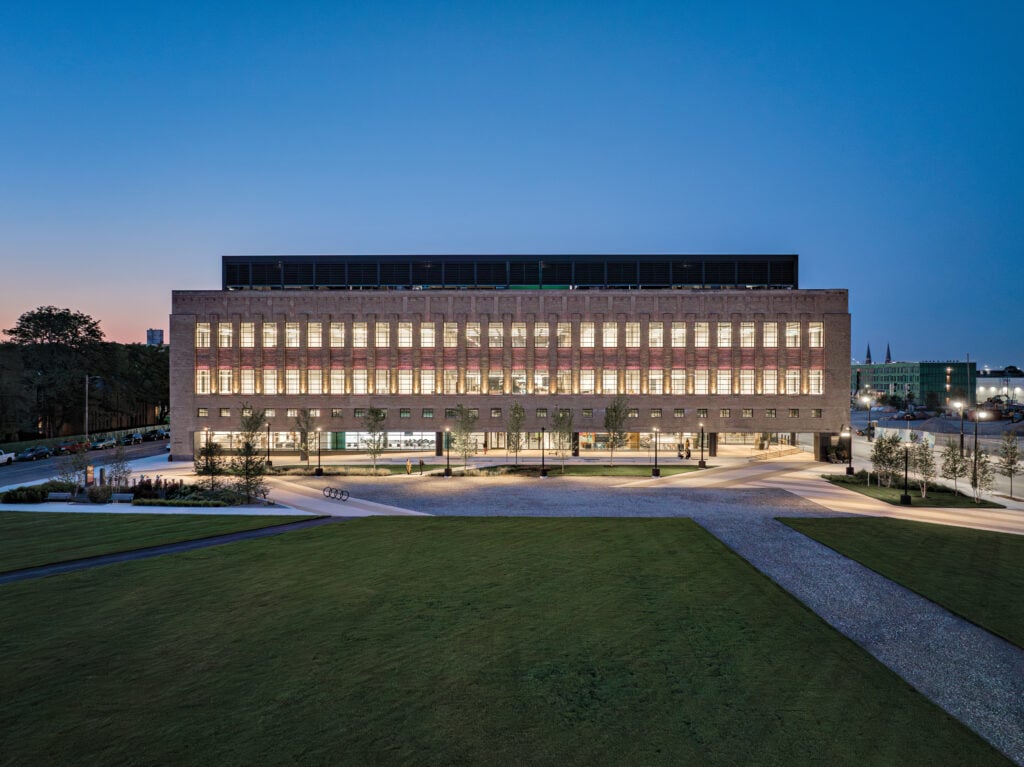
October 9, 2024
The 2024 Net Zero Conference Highlights the Importance of Collective Action
In the grand scheme, is true zero just a pipe dream?

The annual Net Zero Conference, now in its eleventh year, has become a go-to event where efficiency experts and design visionaries the world over gather by the hundreds to share solutions. Such topics range from prioritizing carbon-positive building materials and designing connected energy communities to the critical role green banks can play in financing these endeavors. Indeed, the climate crisis needs optimists. Shula is one of them.
He envisions a utopian “100 percent net-zero future” defined by renewable energy and biodegradable buildings that “return to the earth” upon end of life. But he also laments what he calls “climate dumb” practitioners who build without regard for the impacts of their work. In a call to arms, Shula cites Vitruvius’ three principles of architecture (strength, utility, beauty) and updates them for the 21st century and beyond: design, stay within budget, and don’t kill people! Net Zero is an opportunity to glad hand and lift spirits, but it also a chance for some soul searching. I doubt the Anaheim Convention Center has ever seen such careful rumination.
Another morning keynote, from BlocPower founder Donnel Baird, highlighted the need to focus on the things we know work rather than become fixated on pie-in-the-sky solutions, be it carbon capture, vertical forests, or some other would-be panacea. “It’s achievable. And it’s time to get to work,” Baird said. Such pragmatism is refreshing. It embraces humankind’s existing wherewithal to solve the climate crisis rather than putting stock in our highest aspirations. As Greta Thunberg once said, “We know what we must do.” The tricky part is implementing it.

As is customary at Net Zero, attendees and speakers alike are keen on getting the job done. Just as every building is different, so is every solution. Policy alone, including CALGreen’s amended energy code that accounts for embodied carbon tracking, will not be our salvation. “California alone needs two and half million housing units” to solve the state’s housing shortage, said Webly Bowles, a sustainability director with consultancy WAP, on a panel about converting commercial buildings into housing. “That’s a lot of carbon!” Bowles advocates “stacking” solutions and policies to achieve the greatest impacts, and decarbonizing in ways that also make economic sense. “What we build matters as much as what we don’t build,” she said.
On the question of building solutions to scale, another prominent topic of the day was AI. Specifically, the potential for predictive reasoning engines to track carbon budgets and empower building owners to “navigate the overlapping aims of reducing carbon emissions … mitigating increasing energy costs, and maintaining building occupant comfort.” Unlocking any path to net zero, let alone accelerating carbon reductions on a global scale, will require substantially more Global 2000 companies comply with their ESG goals. Currently, only six percent are on pace to meet their 2050 net-zero goals, and according to speakers on a panel devoted to driving emissions reductions through AI-enabled advanced supervisor controls, 50 percent of the buildings that will exist in 2050 haven’t been built yet.
So, given all that, is net zero possible? The consensus of the day was ‘yes,’ but with caveats. As Shula put it, “We are here to inspire each other to build something that doesn’t exist.” Pair this outlook with Baird’s, which proffers leveraging what we already know, and a new consensus comes to light: all great minds need not think alike.
Would you like to comment on this article? Send your thoughts to: [email protected]
- No tags selected
Latest
Viewpoints
How Can We Design Buildings to Heal, Not Harm?
Jason McLennan—regenerative design pioneer and chief sustainability officer at Perkins&Will—on creating buildings that restore, replenish, and revive the natural world.
Products
Behind the Fine Art and Science of Glazing
Architects today are thinking beyond the curtain wall, using glass to deliver high energy performance and better comfort in a variety of buildings.




